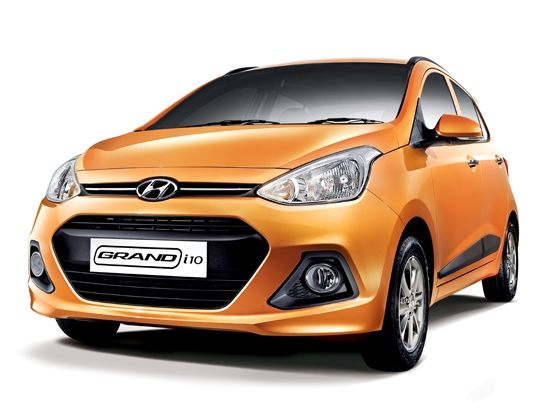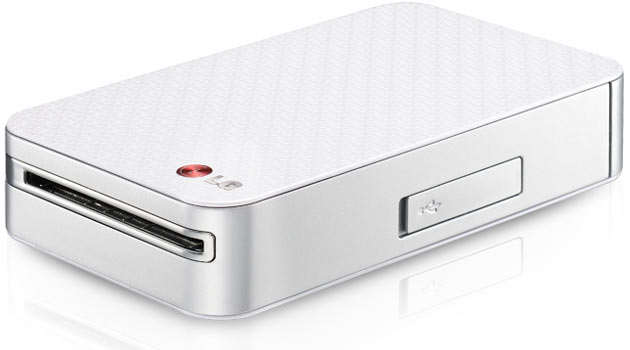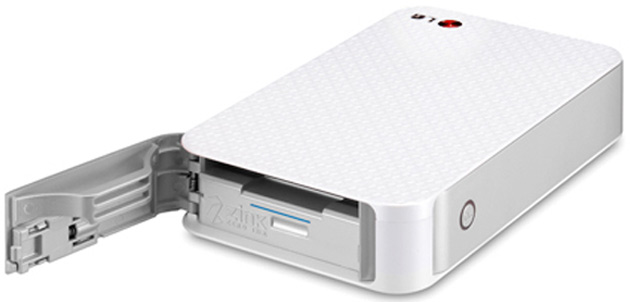Gaming PCs: 4 best high-end CPUs

To receive the best gaming experience, you must pick the best components. Gamers rightfully focus on the video card first, but the processor is also important. The CPU is responsible for handling many tasks, from decompressing level data to simulating physics.
Buying the best gaming CPU can be confusing because of the blizzard of features and options. How many cores are needed? Do two processors with an equivalent clock speed perform the same? And will features like Hyper-Threading matter? If you're lost in the wilderness of processor hype and marketing jibba-jabba, never fear; this guide will help you get the most for your money.
Why does the processor matter?
Before we go over the best choice, let's first take a moment to examine how a CPU relates to gaming. This will be helpful, as you'll become better equipped to choose between our best picks.
The CPU is generally not responsible for rendering graphics. Instead, the CPU is responsible for a wide variety of other important tasks. These include physics, artificial intelligence, decompressing data when a level or game asset is loaded, and running network code in multiplayer games. While not as visually obvious as graphics, these jobs are just as important, so a slow processor can seriously hamper a game's frame rate. The impact is usually felt most in games with large environments, realistic physics and/or many AI agents. Console ports also tend to depend more on the processor because of the relative capabilities of consoles compared to a PC.
Why does the processor matter?
Before we go over the best choice, let's first take a moment to examine how a CPU relates to gaming. This will be helpful, as you'll become better equipped to choose between our best picks.
The CPU is generally not responsible for rendering graphics. Instead, the CPU is responsible for a wide variety of other important tasks. These include physics, artificial intelligence, decompressing data when a level or game asset is loaded, and running network code in multiplayer games. While not as visually obvious as graphics, these jobs are just as important, so a slow processor can seriously hamper a game's frame rate. The impact is usually felt most in games with large environments, realistic physics and/or many AI agents. Console ports also tend to depend more on the processor because of the relative capabilities of consoles compared to a PC.
And not just frame rate matters; frame time (the amount of time required to render a new frame) is also important. A slow processor can have trouble decompressing textures in a new area of an open world game, for example, resulting in momentary stuttering. The game might still run at an average of 60 FPS, but the gameplay experience will not be as smooth. The lower the frame times, the better. Best Performance Desktop Gaming Processor: Intel Core i7-3770K
Intel has now come out with its 4th-gen components, so picking the i7-3770K may seem like an odd choice. There are several reasons for this selection.
First is raw performance. This quad-core processor has repeatedly shown itself to be among the best in benchmarks by offering both excellent average FPS and extremely low average frame times. Intel's newer Core i7-4770K has shown itself to be better, but only slightly; often by a margin of just one or two percent.
The second point in this processor's favor is its overclocking capability. Reaching 4.5 GHz with a custom air cooler is not difficult for the vast majority of chips, and some users manage to push it to 4.8 or 4.9 GHz. The 4770K can reach similar speeds, but reviewers have found that it runs hotter, and sometimes requires water cooling.
Lastly, because the 3770K is the older chip, it's a tad less expensive; $319 vs. $339 for the 4770K. Better still, there's a wider selection of motherboards, and most are less expensive than those compatible with a 4th-gen Core processor.
Best value desktop gaming processor: Intel Core i5-3470
The value this processor offers for gamers is staggering. It costs $120 less than the Core i7-3770K, yet game benchmarks have repeatedly shown it offers performance within 5% or less. In many games, the i5-3470 lags the 3770K by two frames-per-second or less, and average frame times are usually less than a millisecond slower. In practice, the processor will feel almost identical. Indeed, it's hard to find a reason why you should purchase the 3770K instead of this chip if you're not interested in overclocking.
Once again, the 3rd-gen part receives the nod over the newer 4th-gen option, which in this case would be the i5-4570. The reason again is price; the older part is usually $10 less, and the wider selection of slightly less expensive motherboards will save another $10 or $20. Since the i5-4570 hasn't shown itself to be quicker in games, there's not much reason to choose it instead.
Best budget desktop gaming processor: AMD FX-4100
AMD can't compete with Intel for best gaming experience. The company's latest architecture doesn't offer great per-clock performance, which is crucial to games. However, Intel also doesn't offer any quad-core model below $170, leaving dual-core Intel parts to fight AMD's budget quads. One might think that'd allow AMD to make a clean sweep. That's not true, as some games perform better on an Intel dual-core than with a budget AMD quad. But with more and more games targeting quads, AMD's $99 FX-4100 gets the nod. This processor can provide 60 FPS performance in most games (when paired with an appropriate GPU, of course) and frame times equivalent to the best AMD has to offer.
The AMD FX-4100 is up to 40% slower than the Core i5-3470, and takes far longer to render frames in an apple-to-apples comparison. However, these flaws may not matter if the games you play aren't particularly harsh on the CPU. Despite its low price, this chip can handle the majority of games on the market.
Best mobile gaming processor: Intel Core i7 Quad-Core (Any)
Your choice of processor matters less when buying a laptop than when buying a desktop. This is because mobile GPUs are much slower than their desktop counterparts, and also much more expensive. The GPU is almost always the barrier to better frames-per-second.
Still, the processor does make some contribution, so a Core i7 quad-core is a good choice. Intel's mobile quads have become very, very good, offering performance just slightly off a desktop while also offering acceptable battery life. Any of Intel's quads will do, but for reasons of value, I recommend the entry-level variants. Quicker versions are an expensive upgrade, yet barely improve gaming.
You can get buy with a dual-core, such as a Core i5, but it's not recommended. Some games may perform much worse. You'll also have trouble even finding such a configuration, as most gaming laptops use an entry-level Core i7 as the base choice.
Unlike the desktop, where I suggest sticking to the 3rd-gen processors, laptop buyers should look at 4th-gen options. The newest Intel Core mobile parts aren't much faster, but they offer better battery life. Many gaming laptops can now achieve five or six hours of web browsing away from a power socket!
Conclusion
Processor performance is important for gamers, even if it does come in behind the video card. Overall, it's the second most important component, and in some cases an upgrade can offer a drastic improvement. That's because games can become "bound" by a slow processor, unable to render more quickly in spite of the video card's capability.
First is raw performance. This quad-core processor has repeatedly shown itself to be among the best in benchmarks by offering both excellent average FPS and extremely low average frame times. Intel's newer Core i7-4770K has shown itself to be better, but only slightly; often by a margin of just one or two percent.
The second point in this processor's favor is its overclocking capability. Reaching 4.5 GHz with a custom air cooler is not difficult for the vast majority of chips, and some users manage to push it to 4.8 or 4.9 GHz. The 4770K can reach similar speeds, but reviewers have found that it runs hotter, and sometimes requires water cooling.
Lastly, because the 3770K is the older chip, it's a tad less expensive; $319 vs. $339 for the 4770K. Better still, there's a wider selection of motherboards, and most are less expensive than those compatible with a 4th-gen Core processor.
Best value desktop gaming processor: Intel Core i5-3470
The value this processor offers for gamers is staggering. It costs $120 less than the Core i7-3770K, yet game benchmarks have repeatedly shown it offers performance within 5% or less. In many games, the i5-3470 lags the 3770K by two frames-per-second or less, and average frame times are usually less than a millisecond slower. In practice, the processor will feel almost identical. Indeed, it's hard to find a reason why you should purchase the 3770K instead of this chip if you're not interested in overclocking.
Once again, the 3rd-gen part receives the nod over the newer 4th-gen option, which in this case would be the i5-4570. The reason again is price; the older part is usually $10 less, and the wider selection of slightly less expensive motherboards will save another $10 or $20. Since the i5-4570 hasn't shown itself to be quicker in games, there's not much reason to choose it instead.
Best budget desktop gaming processor: AMD FX-4100
AMD can't compete with Intel for best gaming experience. The company's latest architecture doesn't offer great per-clock performance, which is crucial to games. However, Intel also doesn't offer any quad-core model below $170, leaving dual-core Intel parts to fight AMD's budget quads. One might think that'd allow AMD to make a clean sweep. That's not true, as some games perform better on an Intel dual-core than with a budget AMD quad. But with more and more games targeting quads, AMD's $99 FX-4100 gets the nod. This processor can provide 60 FPS performance in most games (when paired with an appropriate GPU, of course) and frame times equivalent to the best AMD has to offer.
The AMD FX-4100 is up to 40% slower than the Core i5-3470, and takes far longer to render frames in an apple-to-apples comparison. However, these flaws may not matter if the games you play aren't particularly harsh on the CPU. Despite its low price, this chip can handle the majority of games on the market.
Best mobile gaming processor: Intel Core i7 Quad-Core (Any)
Your choice of processor matters less when buying a laptop than when buying a desktop. This is because mobile GPUs are much slower than their desktop counterparts, and also much more expensive. The GPU is almost always the barrier to better frames-per-second.
Still, the processor does make some contribution, so a Core i7 quad-core is a good choice. Intel's mobile quads have become very, very good, offering performance just slightly off a desktop while also offering acceptable battery life. Any of Intel's quads will do, but for reasons of value, I recommend the entry-level variants. Quicker versions are an expensive upgrade, yet barely improve gaming.
You can get buy with a dual-core, such as a Core i5, but it's not recommended. Some games may perform much worse. You'll also have trouble even finding such a configuration, as most gaming laptops use an entry-level Core i7 as the base choice.
Unlike the desktop, where I suggest sticking to the 3rd-gen processors, laptop buyers should look at 4th-gen options. The newest Intel Core mobile parts aren't much faster, but they offer better battery life. Many gaming laptops can now achieve five or six hours of web browsing away from a power socket!
Conclusion
Processor performance is important for gamers, even if it does come in behind the video card. Overall, it's the second most important component, and in some cases an upgrade can offer a drastic improvement. That's because games can become "bound" by a slow processor, unable to render more quickly in spite of the video card's capability.




